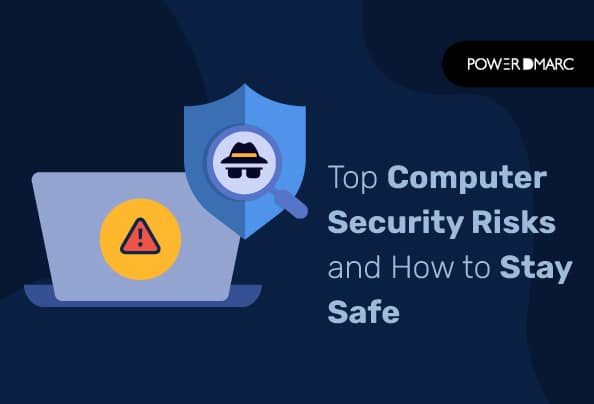
2024-6-7 14:55:58 Author: securityboulevard.com(查看原文) 阅读量:3 收藏
Reading Time: 4 min

As cyber threats evolve, understanding the top PC security risks in 2024 is essential for protecting your digital life. From malware and phishing scams to AI-powered attacks and IoT vulnerabilities, this guide covers the most pressing threats. Learn practical strategies to safeguard your information and the importance of cybersecurity education. Stay informed and proactive to mitigate risks and ensure your digital safety in an ever-changing landscape of cyber threats. Dive in to discover how to protect yourself effectively.
How Serious are the Risks to your Computer Security?
As we move further into 2024, the landscape of computer security risks continues to evolve, posing significant threats to both individual users and businesses. Understanding these risks is crucial for maintaining robust cybersecurity. The increasing sophistication of cyberattacks can lead to severe consequences, including financial losses, data breaches, and compromised personal information. Staying informed about the most common PC security risks is essential for protecting your digital life.
Enhance Your Career with Cybersecurity Knowledge
Enhancing your knowledge of cybersecurity can significantly boost your career prospects. Katherine Phillips, an experienced educator and career advisor with over a decade in the education sector, emphasizes the importance of staying informed about the latest cybersecurity threats. Mastering digital tools and understanding common security risks can set you apart in the job market. Learn more here.
Common Computer Security Risks in 2024
In 2024, several PC security risks stand out due to their prevalence and potential impact.
Malware Attacks
Malware remains one of the most prevalent security threats in 2024. This category includes viruses, worms, and trojans, which infiltrate systems to cause damage, steal data, or gain unauthorized access. Malware can spread through various means, such as email attachments, malicious websites, and infected software downloads. Once inside a system, it can lead to data corruption, system crashes, and unauthorized data access, making it crucial to have robust anti-malware solutions in place.
Phishing Scams
Phishing scams are deceptive attempts to acquire sensitive information by masquerading as trustworthy entities. Attackers often use email, social media, or fake websites to trick users into revealing personal information such as passwords, credit card numbers, and social security numbers. Falling victim to phishing can result in identity theft, financial loss, and unauthorized access to personal and professional accounts. Educating users on how to recognize and avoid phishing attempts is essential for mitigating this risk.
Ransomware
Ransomware is a type of malware that encrypts a user’s files and demands payment for their release. It has become increasingly sophisticated, often targeting businesses and critical infrastructure. Once infected, victims are left with the difficult choice of paying the ransom or losing their data. Regular backups and comprehensive security measures are vital for protecting against ransomware attacks. Additionally, having a response plan in place can help minimize the impact of such incidents.
Emerging PC Security Threats in 2024
As technology advances, new security threats continue to emerge, posing additional challenges.
AI-Powered Attacks
Artificial intelligence is not only being used for defensive purposes but also for enhancing cyberattacks. AI-powered attacks can adapt and evolve, making them more difficult to detect and counter. These attacks can include automated phishing attempts, AI-driven malware, and sophisticated social engineering tactics. Understanding the role of AI in cyber threats is crucial for developing effective defense strategies.
Internet of Things (IoT) Vulnerabilities
The proliferation of IoT devices has introduced new security challenges. These devices, often lacking robust security measures, can serve as entry points for cyberattacks. Vulnerabilities in IoT devices can be exploited to gain access to larger networks, compromise data, and disrupt services. Ensuring that IoT devices are securely configured and regularly updated is essential for maintaining overall PC security.
How to Prevent Computer Security Risks?
Implementing effective strategies is key to staying protected against PC security risks.
Regular Software Updates
Keeping your software up-to-date is one of the most effective ways to protect against security vulnerabilities. Software updates often include patches for known security flaws, helping to prevent exploitation by attackers. Regularly updating operating systems, applications, and security software can significantly reduce the risk of cyberattacks.
Strong Password Practices
Using strong, unique passwords for each of your accounts is critical for preventing unauthorized access. Passwords should be complex, including a mix of letters, numbers, and special characters. Additionally, utilizing password managers can help generate and store secure passwords, reducing the risk of password-related breaches.
Use of Security Software
Investing in reliable antivirus and anti-malware software is a fundamental aspect of PC security. These tools provide real-time protection against a wide range of threats, including viruses, malware, and phishing attacks. Regular scans and updates ensure that your system remains protected against the latest threats.
The Role of Education in Cybersecurity
Understanding cybersecurity is essential for mitigating risks and protecting your digital assets.
Online Courses and Certifications
Enrolling in online courses and obtaining certifications can provide a comprehensive understanding of cybersecurity principles and practices. Certifications such as CompTIA Security+, CISSP, and CEH are highly regarded in the industry and can enhance your career prospects.
Cybersecurity Awareness Programs
Participating in cybersecurity awareness programs can help individuals and organizations stay vigilant against emerging threats. These programs often include training on recognizing phishing attempts, securing personal information, and implementing best practices for online safety.
Real-World Examples of Security Breaches
Examining real-world examples of security breaches can provide valuable insights into the impact of these risks and the importance of robust cybersecurity measures.
Major Corporate Breaches
Recent corporate breaches, such as those experienced by large enterprises, highlight the devastating consequences of inadequate security. These breaches often result in significant financial losses, reputational damage, and legal repercussions. Learning from these incidents can help organizations strengthen their security posture.
Individual Cyberattacks
Personal stories of cyberattacks can serve as powerful reminders of the importance of cybersecurity. These incidents often involve identity theft, financial loss, and emotional distress. Understanding how these attacks occur and the steps to prevent them can help individuals protect themselves online.
Conclusion
In conclusion, staying informed about the most common PC security risks in 2024 is crucial for protecting your digital life. By understanding the threats, implementing effective security measures, and enhancing your cybersecurity knowledge, you can mitigate the risks and stay protected. Ongoing vigilance and proactive measures are essential for maintaining robust cybersecurity in an ever-evolving digital landscape.

*** This is a Security Bloggers Network syndicated blog from PowerDMARC authored by Ahona Rudra. Read the original post at: https://powerdmarc.com/common-computer-security-risks/
如有侵权请联系:admin#unsafe.sh